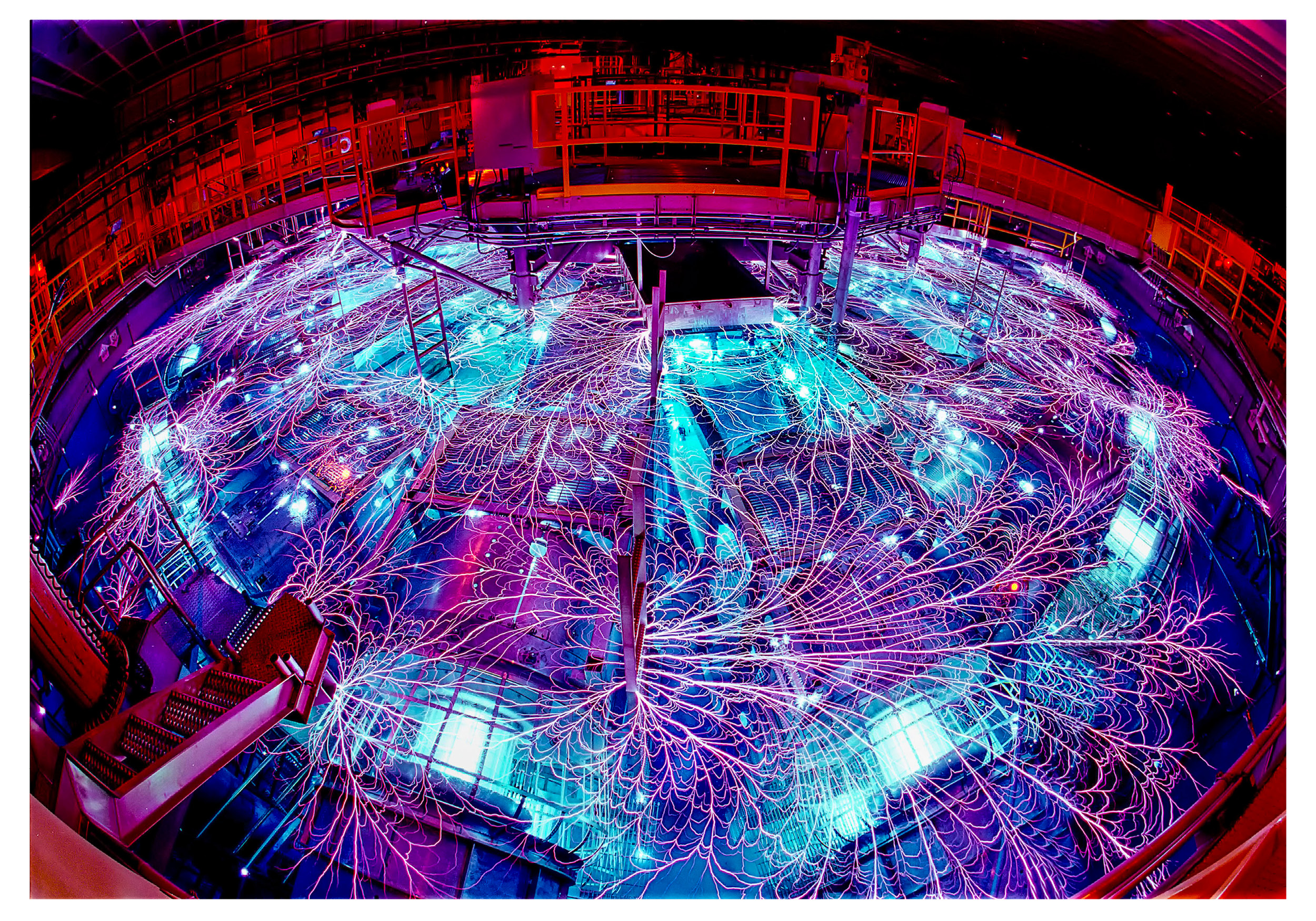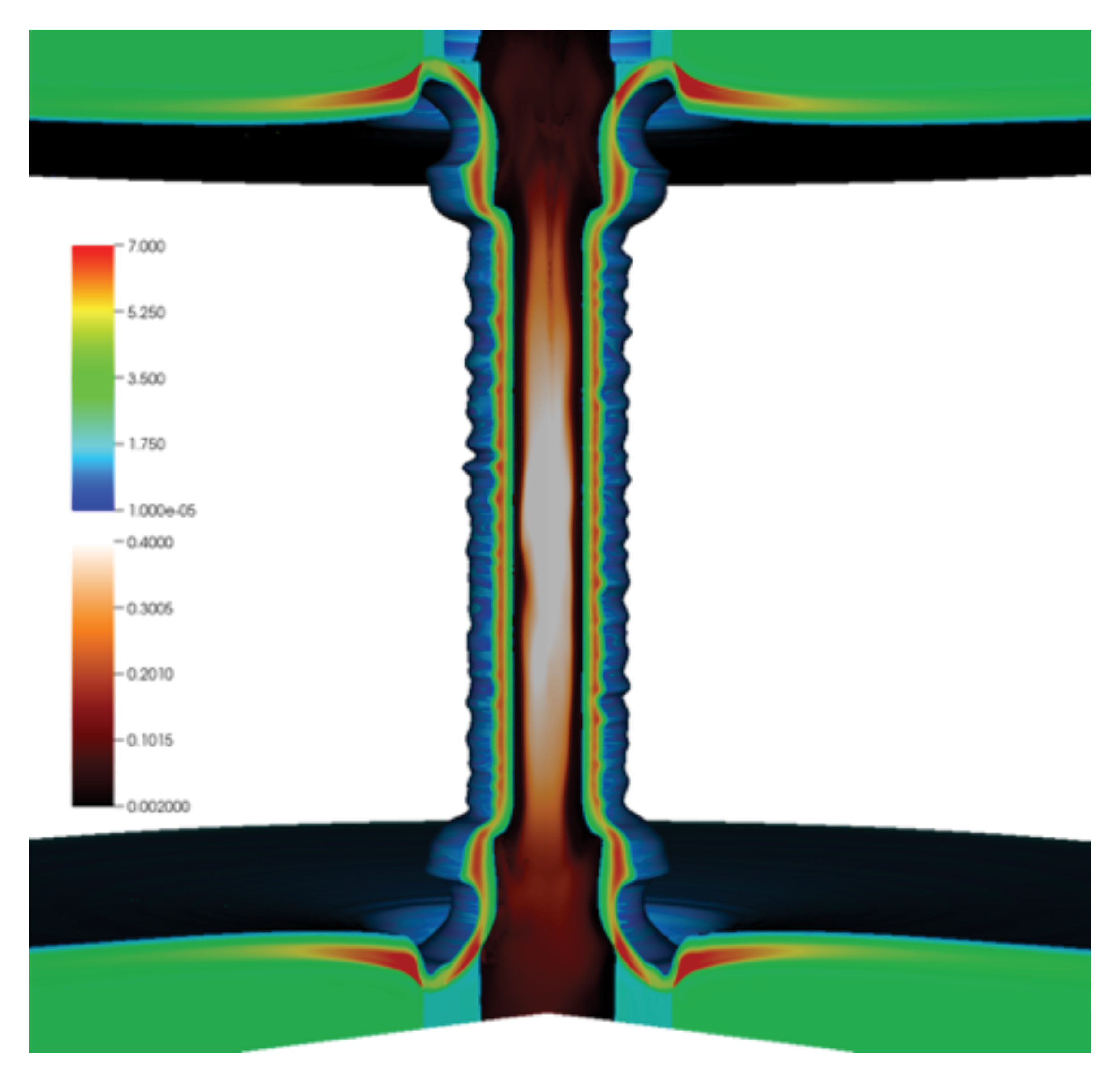
The world’s largest pulsed-powered accelerator—the Z Machine housed at Sandia—is an engine of discovery. Z Machine stores up to 22 megajoules of electrical energy in a series of capacitor banks and can release this energy in roughly 100 nanoseconds. The electrical power (P = Current*Voltage) delivered to an experiment on Z can reach 80 TW, or roughly 12 times the total continuous electrical power generation from the world’s largest power plants.
Z Machine’s primary missions range from studying materials under high pressure, to the development of intense x-ray sources, to inertial confinement fusion (ICF) and magneto-inertial-fusion (MIF). Conventional ICF relies on high velocity spherical implosions to compress and heat fusion fuel to thermonuclear conditions. In MIF, an applied magnetic field is used to relax the requirements to achieve fusion conditions for ICF. Over the past 10 years the Magnetized Liner Inertial Fusion (MagLIF) platform has been developed to study MIF. In MagLIF, the electrical current supplied by Z implodes a 1 cm tall metal tube (cylindrical liner) of beryllium onto fusion fuel via the J x B force (Lorentz force), where J is the axial current density and B is the azimuthal magnetic field produced by the current through Ampere’s Law. Before the liner implodes, the fuel is also initially heated by the Z-Beamlet laser, which helps to reduce the necessary compression to achieve fusion conditions.
As the fuel compresses and heats, it can lose energy radially through thermal conduction to the liner wall, cooling the fuel. The applied axial magnetic field is the key MIF feature of MagLIF and inhibits this heat loss. Heat is primarily transported by electrons, but with the addition of an axial magnetic field, the electrons instead tend to gyrate around the magnetic field azimuthally, as they try to move across the magnetic field, which slows the transport of heat. The combination of these effects has successfully produced thermonuclear fusion conditions in over 70 MagLIF experiments.
MagLIF, originally conceived in 2009 through 1D and 2D simulations, had its first experiments begin in late 2013. While the experiments successfully produced fusion conditions, they revealed striking 3D structures in the fusion plasma. Like any inertial confinement fusion concept, MagLIF is susceptible to the Rayleigh-Taylor instability (RTI), which tends to break up the liner during implosion and thereby reduce the confinement of the fuel at stagnation.

Radiographic images taken of the liner during implosion show that the RTI structure changes with the axial magnetic field. Instead of azimuthal-correlated structures, which are approximately 2D, the instability becomes helical. Such 3D instabilities cannot be produced by a 2D computer code but are necessary to understand the experimental data.
This is where Sandia’s HPC power comes into play. The Advanced Simulation & Computing (ASC) Nuclear Deterrence Program Clusters at Sandia, in coordination with the New Mexico Alliance for Computing at Extreme Scale (ACES), has allowed unprecedented modeling of MagLIF in 3D. It does this by using the HYDRA code. HYDRA is a massively parallel, multi-physics code used on HPC computers for modeling high-energy density plasmas such as those found in ICF. HYDRA was originally developed by Lawrence Livermore National Laboratory (LLNL) for modeling spherical implosions on the National Ignition Facility (NIF). In collaboration with Sandia, HYDRA now includes a full resistive magneto-hydrodynamics (MHD) package for modeling experiments on Z Machine.
A typical full 3D model of MagLIF with modest spatial resolution requires a simulation volume of roughly ~π*(1 cm)2 *(2 cm) and 25 million computational cells. To model the laser heating, ~ 1 million rays are used by the ray-tracing package, and the implicit Monte Carlo algorithm models the transport of radiation in the target. HYDRA also incorporates detailed models for material properties. For example, beryllium uses equation of state as well as electrical and thermal conductivity tables developed at Sandia to model the material from solid room temperature, through melt, to the warm-dense matter conditions at stagnation. These detailed 3D simulations produce much better agreement with MagLIF experiments on the Z Machine and provide better insight into the physics of MIF. As well, these HPC simulations enhance Sandia’s confidence in using computational tools to both understand current experiments on Z and design meaningful future experiments both on Z and future pulsed-power facilities.
Currently, 3D calculations are for very targeted situations, but as computational resources continue to expand and improve, more routine 3D simulations will enable even more rapid progress in these areas.